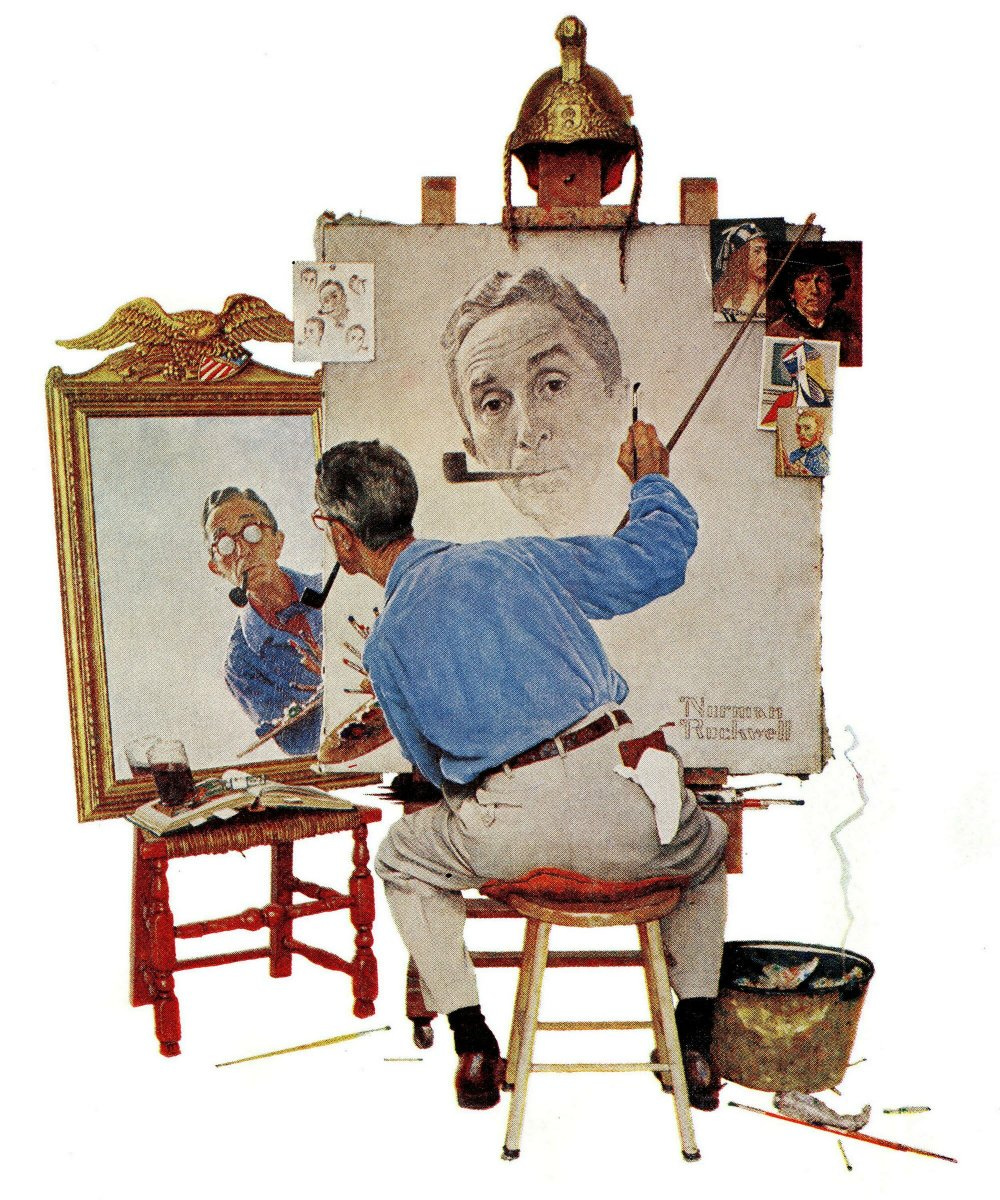A great poet once said that you can judge a nation by how it honors (or fails to honor) its artists. In many ways, the soul of a nation is entirely shaped by the artists which that society has produced. This makes perfectly good sense, as an artist is able to portray the better ideals which that society yearns to become and can convey concepts on a nearly subconscious level that may either uplift our self conception to the divine or inversely inflame our basest passions. An artist can also awaken truthful moral lessons and temper raw emotions of a people which mere lecturing/moralising could never accomplish.
In America, an artist arose in the 20th century whose passion, moral integrity and technical genius shaped and ennobled the hearts and minds of generations, and while this painter is loved in America, his works are often shrugged off as naive and sentimental devotions to a happier world that neither ever was nor could ever be. It is in the hopes of lifting this ignorant veil that the Rising Tide Foundation would like to present the life and work of Norman Rockwell (1894-1978).
Born in New York in 1894, Norman Rockwell was inspired by the contemporary illustrations of Joseph Leyendecker and Howard Chandler Christie and especially the Dutch school of Vermeer and Rembrandt. After graduating from the National Academy of Design and Art Students’ League, Rockwell began illustrating children’s’ books and magazine covers for Boy Scouts of America. From an early age, Rockwell aspired to revive the renaissance tradition of Rembrandt, Vermeer, Raphael and DaVinci whose reproductions were always displayed across the walls of his studios as inspiration.
Serving in WWI as an artist, Norman returned to civilian life producing works for various magazines until he eventually found himself painting regularly for the Saturday Evening Post which established his role as the painter of America’s soul for the next five decades. With a passion for capturing universal sentiments even in the microcosm of life, Rockwell found himself pioneering the domain of storytelling by transforming the “fixed” medium of painting into a medium for storytelling.
This focus on painting “outside of the canvas” so to speak set Rockwell apart from all of his contemporaries who were far too fixated on sensual imagery of commercial art or random emotional tones prevalent in the newly emerging abstract art world. Describing his feelings about the schism between “illustration” and “fine art”, Rockwell had this to say:
“No man with a conscience can just bat out illustrations. He’s got to put all of his talent, all of his feeling into them. If illustration is not considered art, then that is something that we have brought upon ourselves by not considering ourselves artists. I believe that we should say, “I am not just an illustrator, I am an artist.”
The following gallery showcases samples of his works from his first Post cover in 1916 throughout the 1920s and 1930s.






Matt thanks much for this piece. I have always said that Rockwell was one of my favorite artists...but always felt a little bad about it...as if that meant my tastes must be...what's the word...unrefined or something? As if I should apologize for thinking so. This piece helps confirm...damn! I was right all along and didn't know it. The past 3 years have been eye-opening in so many ways. Thanks for what you're doing, I truly appreciate it.
Thank you for sharing this (and the lovely gallery), Matt. Merry Christmas to you and Cynthia and all those you love! 💗🎄💗